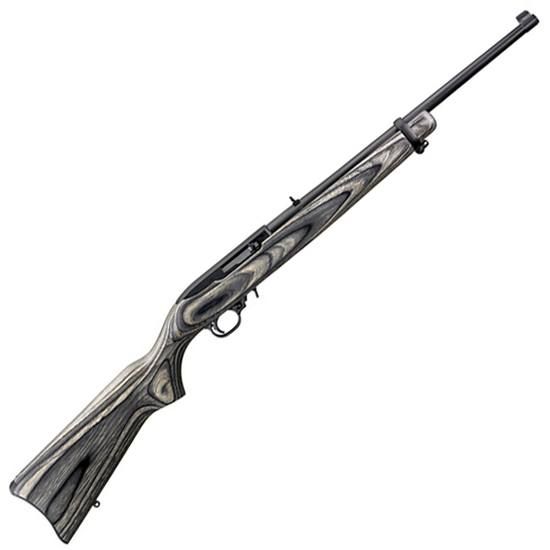Email a copy of 'Start With a .22 Rifle– Part 3, by behind-the-counter' to a friend
4 Comments
- Ad Rural Home Defense: non-fiction by author Don ShiftA cop's guide to protecting your rural home or property during riots, civil war, or SHTF. A sequel in the Suburban Defense series.
- Ad California Legal Rifles & Pistols!Get the firepower necessary to survive in restrictive states! WBT offers California & other state compliant rifles from any brand you want.


Great .22 article. One comment. When seeking accurate .22 ammo always go subsonic. What this means is something below 1,100fps. A .22LR projectile is NOT designed for supersonic flight. MOST standard “high velocity” .22 rounds have a muzzle velocity that is 1200fps or higher. Not exactly a formula for success. Just like a high powered rifle bullet needs to stay well into the supersonic range to be accurate the .22LR needs to stay in the subsonic range to be really accurate. My favorite balance of accuracy and ammo price per round is currently the CCI Standard Velocity Target ammo. While it is possible to purchase target ammo that groups 1/2 the size of the of the CCI ammo the improved group comes at a price point that is 5x or more higher than the CCI. You can typically purchase the CCI online for a little less than eight cents per round. My experience with that ammo and many stock .22 Ruger rifles with free floated barrels is five shot groups that are all flying through the same large ragged hole at 25 meters. Not bad for 8 cent per round .22LR.
I agree completely that the CCI Standard Velocity is an excellent place to start for accuracy with any 10/22 – carbine or Takedown. Even so, we always run at least two magazines with CCI MiniMag 36 gr HP and Eley Match (a little more expensive but not as pricey as Lapua Midas+). Amazingly, we find some 10/22s have a pronounced preference for the MiniMags.
What I was taught is that for the best accuracy with .22LR, it is important that the whole flight path be subsonic (like almost all match grade loads usually 1060 to 1070 fps) or supersonic from muzzle to target. The biggest disruption comes from starting supersonic (say 1200 fps with a MiniMag) and dropping below the sound barrier in flight.
What I should have said more clearly in my earlier comment is that the speed range you always want to stay clear of (for best accuracy) is what is called the Transonic range. Since the speed of sound varies with temperature and the formation of shock waves is also somewhat shape dependent there is no specific velocity. As you pointed out if you stay with match ammo you are solidly into subsonic in most conditions. If you happen to be using a rifle with a barrel length of more than 16″ odds are the bullet will be traveling even slower than is printed on the box. To keep a bullet out of the transonic range on the supersonic side you are best to stay above 1,600fps. When a bullet is charging along at supersonic speeds it will have two distinct formed shock waves, one attached to the bullet nose and one attached to the bullet tail. The angle of those shock waves is the sine of the mach number. When you come down into the transonic range those shock waves can move around on the body of the bullet which is what causes the instability. Since most of the high velocity .22 ammo is running in the transonic range it is going to be unstable as a result until the bullet slows to solidly subsonic flight.
With a bolt action .22 where you have some extra room you could actually make a nice supersonic round by borrowing a trick from the Trident II missile. The trick is called an Aerospike. By taking something like a cut off straight pin and lodging it point forward in the center of the typical .22 bullet you could force the shock wave to form at the tip of the pin point instead of the blunt bullet nose. This would decrease the supersonic drag by a considerable amount increasing the range of the bullet and supersonic speed and likely also improving the accuracy at supersonic speed. If I get some time I may play with that a little.
https://en.wikipedia.org/wiki/Drag-reducing_aerospike
Wow! Thanks for the clarification. You know much more about the theory than I do, and I would encourage you to do an article for survivalblog.com with chronograph data at both the muzzle and the target. That would be great info to share.
Let me add an observation from practical experience. Our accuracy testing on custom 10/22s we build for customers is generally consistent with the advice of avoiding the transonic turbulence when a supersonic projectile drops below the speed of sound by starting with something like CCI Standard Velocity, Eley Match, or Lapua Midas. Even so, we know first hand that some rifles (maybe 1 out of 4) actually perform better at 25 yards with a supersonic round like CCI MiniMag in the 36 gr version. We have had some test targets with subsonic rounds look like we had used a shotgun! And, then shrink to a single ragged hole with MiniMags.
There are lots of different theories to explain the phenomenon, but the unique combination of barrel harmonics, barrel steel, rifling, and the extent of barrel contact with the the forend causes rifles that look identical to display different preferences for ammo brands or styles. The only real way to find out is to test.